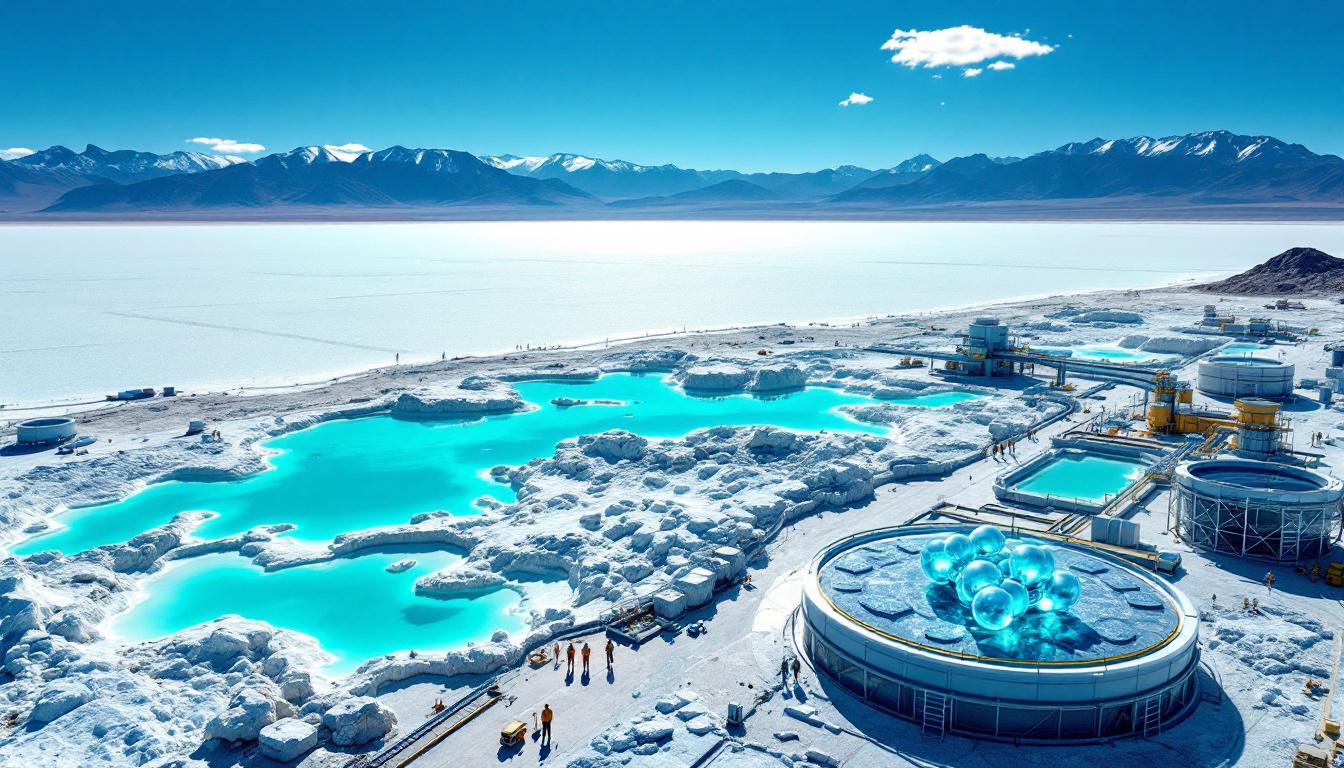How Were the Cascades Formed and When Did They Rise?
The Cascade Mountains form a dramatic north-south mountain range featuring iconic volcanoes like Mount Rainier, Mount St. Helens, Mount Hood, and Mount Shasta. With mountain passes ranging from 3,000 to 5,000 feet in elevation and peaks reaching 10,000-14,000 feet, today's Cascades present a formidable topographic barrier.
However, geological evidence suggests this wasn't always the case. The Cascade volcanic arc has existed for approximately 46 million years, but the high elevation Cascades we know today are a relatively recent development—less than 10 million years old.
The Evolution of the Cascade Range
The Cascade Range's development can be broken down into several distinct periods:
- 46-36 million years ago: Early Cascade arc formation with relatively low elevations
- 36-28 million years ago: The Ohanapecosh Formation period, when parts of today's Cascades were actually underwater
- 28-18 million years ago: A coastal plain environment with low hills and volcanic activity
- 18-10 million years ago: Continued low elevation with scattered volcanic centers
- 10 million years ago to present: Progressive uplift creating the high Cascades we see today
This timeline reveals a surprising fact: when the Columbia River flood basalts erupted around 16 million years ago, they encountered a much lower topographic barrier than exists today.
What Are the Columbia River Flood Basalts?
The Columbia River Basalt Group represents one of the world's largest flood basalt provinces, covering vast portions of Washington, Oregon, and Idaho. These enormous lava flows erupted from fissures (cracks in the earth) near the Idaho border approximately 16 million years ago.
Key Characteristics of the Flood Basalts
- Erupted between 16.5 and 6 million years ago, with the most voluminous phase occurring between 16.5-16.1 million years ago
- Comprised of approximately 300 individual lava flows
- Individual flows averaged 50-100 feet thick
- Watery, Hawaiian-style basaltic lavas that flowed like liquid across the landscape
- Total thickness reaches 3 miles in some locations
- Connected to the Yellowstone hotspot, which was positioned under eastern Washington/Oregon at that time
The Grand Ronde Formation: Main Player in the Crossing Question
Within the Columbia River Basalt Group, the Grand Ronde Formation represents approximately 75% of the total volume and is the primary focus when discussing potential Cascade crossings. The Grand Ronde eruptions occurred between 16.5-16.1 million years ago and can be divided into four magnetic polarity intervals (R1, N1, R2, N2) that help geologists track individual flows.
The N2 flows (the youngest Grand Ronde lavas) are of particular interest, as they represent the most likely candidates for having potentially crossed the ancestral Cascades.
Why Would Geologists Question If Basalts Crossed the Cascades?
At first glance, the question of whether massive lava flows crossed a major mountain range seems absurd. However, several geological factors make this a legitimate scientific inquiry:
Evidence Supporting Potential Crossings
- Timing of Cascade uplift: The high Cascades developed after the flood basalts erupted
- Elevation differences: When the basalts erupted around 16 million years ago, the Cascades were much lower (less than 3,000 feet)
- Erosional processes: Geological uplift accelerates erosion, potentially removing evidence
- Remnant basalts: Grand Ronde lavas are found at high elevations on the eastern flank of the Cascades
- Western Washington basalts: N2 Grand Ronde basalts are found near Aberdeen, Washington
- Historical precedent: The Columbia River Gorge provides clear evidence that flood basalts did flow through at least one major gap in the Cascades
What Evidence Exists for Basalts Crossing the Cascades?
The question of did the flood basalts cross the Cascades was actively debated by geologists in the 1940s-1970s, including prominent researchers like Jay Hoover Macken, Eric Cheney, and Paul Hammond. While interest in this question has waned in recent decades, several lines of evidence support the possibility.
Physical Evidence in the Landscape
- Mission Ridge: North of Ellensburg, Washington, Mission Ridge contains approximately 1,000 feet of Grand Ronde lava
- Lookout Mountain: Above Cle Elum, Washington marks what's conventionally considered the western boundary of Columbia River basalts
- Divide Ridge: Between Yakima and White Pass contains Grand Ronde lava at thicknesses up to 1,500 feet
- Steamboat Mountain: Located in the Cascades between Mount Adams and Mount St. Helens, contains confirmed Columbia River basalt
Geological Reasoning
- Topographic considerations: The ancestral Cascades were much lower when the basalts erupted
- Valley-following flows: Lava would have followed pre-existing valleys through the low Cascades
- Structural framework: Northwest-southeast trending structures may have provided pathways
- Erosional removal: Subsequent uplift and erosion could have removed much of the evidence
As Jay Hoover Macken wrote in 1947, when the flood basalt eruptions ceased, "the lava surface extended as an almost featureless plane covering much of Washington and Oregon and extending entirely across the site of the Cascades to the ocean."
How Did the Columbia River Gorge Play a Role?
The Columbia River Gorge represents a clear example of flood basalts passing through the Cascade Range. Basalt layers in the gorge walls demonstrate that lava flows successfully navigated through this corridor to reach the Pacific Ocean.
Uplift Evidence in the Columbia River Gorge
Particularly revealing is the elevation difference of Grand Ronde basalts within the gorge itself:
- Grand Ronde lavas near Cascade Locks are approximately 3,000 feet higher than their counterparts near The Dalles
- This elevation difference demonstrates significant post-eruption uplift
- The Columbia River maintained its course by cutting downward at approximately 0.3 mm/year as the mountains rose
- Similar processes could have occurred elsewhere in the Cascades, but with complete erosional removal of basalts
What About the Ellensburg Formation?
The Ellensburg Formation consists of sedimentary deposits interbedded with and overlying the Columbia River Basalt Group. According to Paul Hammond, this formation may hold crucial clues about Cascade uplift:
"The Ellensburg Formation is telling us about Cascade uplift. We're just not listening."
Hammond suggested that the Ellensburg Formation once blanketed much of the Cascades, including areas west of the current crest, with remnants potentially preserved at Crystal Mountain. This perspective suggests that sedimentary materials associated with the flood basalts may have been much more widespread than currently recognized.
When Did the High Cascades Form?
The timing of major Cascade uplift remains debated, with estimates ranging from 15 to 3 million years ago. Various lines of evidence from eastern Washington provide different perspectives:
- Plant fossils in the Ellensburg Formation
- Calcrete development in Hanford boreholes
- Distribution of dryland plant species
- Geomorphological evidence
- Tilting of the Thorp Formation
Current research by Sky Culie suggests significant uplift may have begun around 7 million years ago, with high topographic divides well-established by 4 million years ago.
What Drove Cascade Uplift?
Several mechanisms have been proposed for the uplift of the High Cascades:
- Changes in plate configurations: Shifts in offshore tectonic plates may have triggered renewed uplift
- Magma flux: Increased magmatic activity could have physically elevated the range
- Regional compression: North-south compression from plate interactions may have squeezed the range upward
- Clockwise rotation: The Pacific Northwest is rotating clockwise, potentially contributing to uplift
How Quickly Can Mountain Landscapes Change?
The Tieton Andesite flows provide a compelling example of how rapidly erosion can transform mountain landscapes. These relatively recent lava flows (1.64 and 1.39 million years ago) from the Goat Rocks volcanic complex flowed eastward toward Yakima.
Despite their young age, significant portions of these flows have already been eroded away. The rapid removal of these 1.5-million-year-old lavas demonstrates how effectively erosion can erase evidence of past geological events, lending credibility to the idea that much more extensive Columbia River basalts could have been removed from the High Cascades.
Why Does This Question Matter?
The question of whether flood basalts crossed the Cascades has implications beyond simple geological curiosity:
- Understanding landscape evolution: It helps us comprehend how dramatically landscapes can change over geological time
- Reconstructing paleogeography: It provides insights into what the Pacific Northwest looked like 16 million years ago
- Evaluating erosion rates: It offers perspective on how quickly mountain ranges can be built up and torn down
- Recognizing geologic complexity: It reminds us that simple present-day observations may not tell the full story of a region's geological past
Are There Other Examples of Basalt Flows Crossing Mountain Ranges?
The GKO flow provides an instructive parallel to the larger question of Cascade crossings. This specific Columbia River basalt flow demonstrably crossed the Oregon Coast Range, connecting exposures in the Willamette Valley with those at Newport on the Oregon coast.
Today, there is no continuous exposure of the GKO flow across the Coast Range—erosion has removed the connecting portions. Yet geologists universally accept that this flow crossed the range based on chemical and mineralogical similarities between the separated exposures.
This example demonstrates that flood basalts can indeed cross topographic barriers and subsequently be fragmented by erosion, lending credibility to the possibility of more extensive crossings through the ancestral Cascades.
What Future Research Could Resolve This Question?
Several approaches could help resolve the question of did the flood basalts cross the Cascades:
- Detailed geochemical analysis: Comparing the chemistry of isolated basalt exposures in the Cascades with known Grand Ronde flows
- Mapping potential flow paths: Reconstructing paleovalleys that could have channeled lava through the ancestral Cascades
- Dating associated sediments: Precise dating of the Ellensburg Formation to better understand the timing of deposition and erosion
- Subsurface investigation: Looking for buried basalt remnants beneath younger deposits in western Washington
- Paleoelevation studies: Developing better constraints on Cascade elevations during the mid-Miocene
Current research, including work by Hannah Shamloo on the basalt basement beneath the Goat Rocks volcanic complex, may provide new insights into this long-standing geological question.
Conclusion: A Question Worth Revisiting
The question of did the flood basalts cross the Cascades, once actively debated by prominent geologists, deserves renewed attention. While definitive evidence remains elusive, the combination of:
- Low ancestral Cascade elevations during the time of eruption
- Impressive volumes of Grand Ronde lavas
- Isolated basalt exposures high in the Cascades
- Demonstrated rapid erosion rates
- Accepted examples of similar crossings elsewhere
All suggest this is not merely an academic curiosity but a legitimate geological question with implications for understanding the evolution of the Pacific Northwest landscape.
As Don Swanson's USGS mapping of basalt beneath the Goat Rocks complex suggests, there may be more preserved evidence of Columbia River basalts in the Cascades than previously recognized. The research community would benefit from applying modern analytical techniques, such as 3D geological modelling and advanced dating methods, to this fascinating question about the region's geological past.
"The Ellensburg Formation is telling us about Cascade uplift. We're just not listening." – Paul Hammond
This quote from Hammond serves as a reminder that sometimes the clues to resolving major geological questions have been in plain sight all along—waiting for researchers to examine them with fresh perspectives and new analytical tools.
Further Exploration
Readers interested in learning more about the geological history of the Cascade Range and Columbia River flood basalts can explore related educational content, including lectures by regional geologists and field guides published by geological societies of Washington and Oregon. Furthermore, understanding magmatic deposit formation processes can provide valuable context for interpreting these massive basalt flows.
Comprehensive drilling program studies could potentially recover samples from critical locations that might resolve the question of basalt extent. In addition, applying modern geological logging standards to existing and new data could help clarify the relationship between various mineral deposit tiers across the region. For more in-depth information, the USGS Columbia Plateau summary provides excellent context on these remarkable geological features.
Searching for the Next Major Mineral Discovery?
Discovery Alert's proprietary Discovery IQ model instantly identifies significant ASX mineral discoveries, turning complex geological data into actionable investment insights before the broader market catches on. Learn why historic discoveries can generate substantial returns by visiting the dedicated discoveries page and begin your 30-day free trial today.




